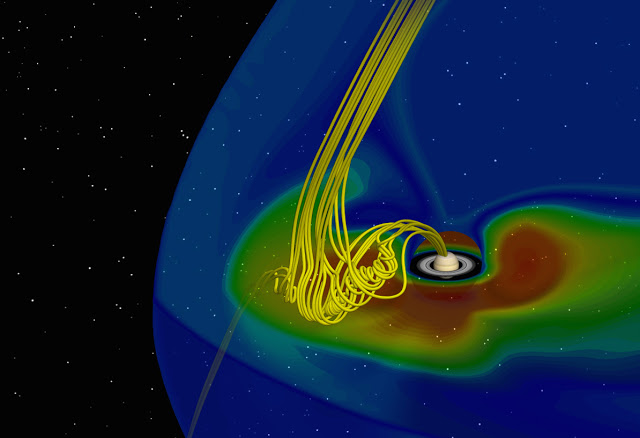When the Sun’s magnetic field hits the Earth’s magnetic field, a complex process occurs called magnetic reconnection, and because of that the shape of magnetic field changes into helical one. First time ever now it happened that scientists has observed a twisted magnetic field structure at Saturn, using instrumentation built at UCL and Imperial College.
(adsbygoogle = window.adsbygoogle || []).push({});
These twisted helically structured magnetic fields are called flux ropes or “flux transfer events” (FTEs). The circumstances that allow FTEs to be created at a planet degenerate with distance from the Sun. This phenomenon has also been observed at Earth and even more commonly at Mercury.
Researches have been made to find an FTE with the help of NASA’s Cassinispacecraft. The observation of this phenomenon at Saturn has been more successful than expected.
Cassini spacecraft is in orbit around Saturn and working on since 2004 and after the collection of data of many years, Cassini has observed the first FTE at Saturn. The observed magnetic signature was successfully compared to that of a model to show that Cassini indeed observed a flux rope at this giant magnetosphere. It is also assessed that the flux rope could be up to 8300 kilometers wide.
(adsbygoogle = window.adsbygoogle || []).push({});
Jamie Jasinski, UCL Space and Climate Physics PhD graduate now based at the University of Michigan, and the lead author of the paper said: "Contrary to previous ideas about Saturn's magnetosphere being unlike its terrestrial counterpart, these findings reveal that Saturn at times behaves and interacts with the Sun in much the same way as Earth."
The phenomenon of the reconnection of the magnetic fields of Saturn with sun is almost the same as earth. The analysis was completed using a particle spectrometer built at UCL and a magnetometer built at Imperial College, both of which are onboard NASA’s Cassini spacecraft.
The spacecraft will be directed closer to the planet to study further, and the mission will end in November 2017.

